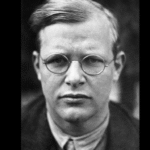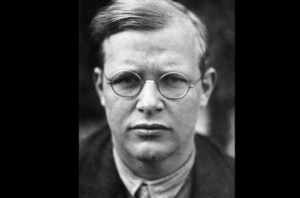
A thin Red Line in the battlefield!
The movie
‘The Thin Red Line’ is a 1998 American war film directed by acclaimed filmmaker Terrence Malick. The film is an adaptation of the 1962 novel of the same name by James Jones, depicting the harrowing Battle of Guadalcanal during World War II.
Set against the backdrop of this pivotal conflict in the Pacific Theatre, the film artfully weaves together themes of nature, humanity, and the existential struggles of soldiers in war. Malick’s approach to storytelling in ‘The Thin Red Line’ is distinct, relying heavily on visual poetry and philosophical voiceovers that invite viewers to ponder the deeper meanings of life and conflict.
Upon its release, ‘The Thin Red Line’ garnered critical acclaim and sparked discussions surrounding its unique narrative style, which diverges from traditional war films that often focus on linear storytelling and action-oriented sequences. Instead, Malick’s film emphasizes the internal turmoil experienced by soldiers, effectively portraying the psychological impact of war.
The cinematography, helmed by director of photography Emmanuel Lubezki, showcases lush landscapes juxtaposed with the horrors of battle, further enhancing the film’s thematic depth. The lush visuals, coupled with an evocative score by Hans Zimmer, create a meditative atmosphere that contrasts sharply with the violence of war.
Plot Summary and Themes
“The Thin Red Line,” directed by Terrence Malick, presents a profound narrative set against the harrowing backdrop of the Battle of Guadalcanal during World War II. The film follows a contingent of U.S. soldiers, primarily focusing on Private First Class Witt, who wrestles with existential questions about life and death amid the chaos of war.
As the plot unfolds, viewers witness the experiences of various soldiers, including Lieutenant Jones and Sergeant Welsh, each representing different perspectives on courage, fear, and the essence of humanity.
The character arcs are intricately developed, showcasing their transformation from civilians to soldiers grappling with the brutal realities of combat. Witt’s philosophical musings act as a narrative thread, prompting reflections on the nature of war and the individual’s place within it.
His journey, marked by internal conflict and yearning for peace, contrasts sharply with the military hierarchy’s rigid expectations. This juxtaposition underscores a central theme: the struggle between humanity and the mechanized nature of warfare.
Partner Boost
The film delves into several themes, most notably the futility of violence and the search for meaning in a chaotic world. Malick’s artistic style amplifies these themes through lyrical visual storytelling and a non-linear narrative structure. The landscape becomes a character in its own right, serving as a poignant reminder of the war’s devastation and beauty. By capturing fleeting moments of serenity amid turmoil, the film invites reflections on the human condition.
Ultimately, “The Thin Red Line” is not just a war film; it is a philosophical exploration of existence, morality, and the impact of conflict on the human soul, making it a timeless piece in cinematic history.
Cinematic Techniques and Style
Terrence Malick’s ‘The Thin Red Line’ stands out in the war drama genre not only for its profound narrative but also for its innovative cinematic techniques. One of the most striking elements is the cinematography, overseen by Emmanuel Lubezki, who captures the lush natural landscapes of Guadalcanal with an almost ethereal quality.
The film employs a combination of sweeping wide shots and intimate close-ups, reflecting the vastness of the environment as well as the inner turmoil of the characters. This juxtaposition serves to underscore the themes of nature versus war, a central motif throughout the narrative.
The film’s sound design further enhances its emotional weight. Malick utilizes a blend of natural sounds—such as wind, water, and rustling leaves—alongside a haunting score by Hans Zimmer. This auditory backdrop not only immerses viewers in the film’s setting but also heightens the emotional resonance of pivotal scenes.
The soundscape often oscillates between moments of silence and the cacophony of battle, emphasizing the juxtaposition of peace and chaos that characterizes the soldiers’ experiences.
Another distinguishing feature of ‘The Thin Red Line’ is its use of voiceover, which provides an introspective lens into the minds of various characters. This technique allows audiences to connect intimately with the soldiers’ thoughts and feelings, offering insight into their motivations and fears.
Unlike traditional war films that may focus on action, Malick’s nonlinear storytelling invites viewers to consider the philosophical implications of war, mortality, and existence itself.
Visual symbolism is also prevalent throughout the film, with nature often serving as a metaphor for the human condition. Scenes depicting the beauty of the landscape contrast sharply with the brutality of war, prompting reflections on the fragility of life.
Such techniques create a multi-faceted viewing experience that transcends typical war narratives, ultimately leaving a lasting impact on audiences.
Legacy and Impact of The Thin Red Line
Since its release in 1998, Terrence Malick’s ‘The Thin Red Line’ has cemented its status as a pivotal work within the genre of war films. Its unique narrative structure and philosophical underpinnings have inspired a new generation of filmmakers, prompting them to explore the psychological complexities of human conflict.
Unlike traditional war films that often emphasize heroism and valor, Malick’s masterpiece delves into the internal struggles of soldiers, highlighting the moral ambiguities inherent in warfare. This introspective approach has set a precedent, encouraging subsequent works to adopt a more nuanced portrayal of combat, emphasizing the human experience over sensationalized violence.
The film garnered critical acclaim upon its release, earning seven Academy Award nominations, including Best Picture and Best Director for Malick. While it did not secure a win in these major categories, its recognition by the Academy and other prestigious organizations underscores its artistic merit and impact on the cinematic landscape.
Notably, the film’s exploration of nature and the juxtaposition of beauty and brutality has resonated with audiences, making it a subject of discussion in both academic and popular circles.
Furthermore, the film’s legacy continues to thrive in contemporary discussions about war and the human condition. As conflicts persist globally, ‘The Thin Red Line’ serves as a reminder of the profound psychological toll that war exacts on individuals. Its reflection on themes such as mortality, morality, and the fragility of life ensures that the film maintains relevance in today’s society.
By challenging viewers to contemplate the intricacies of war and existence, Malick’s work offers a timeless commentary that transcends its historical context, reinforcing its status as a cinematic treasure.
Share this content:























